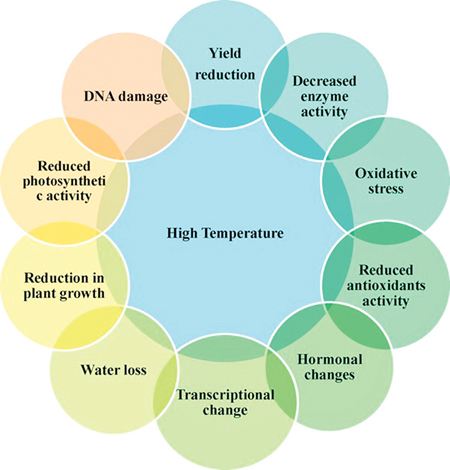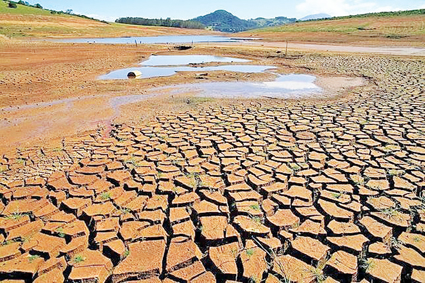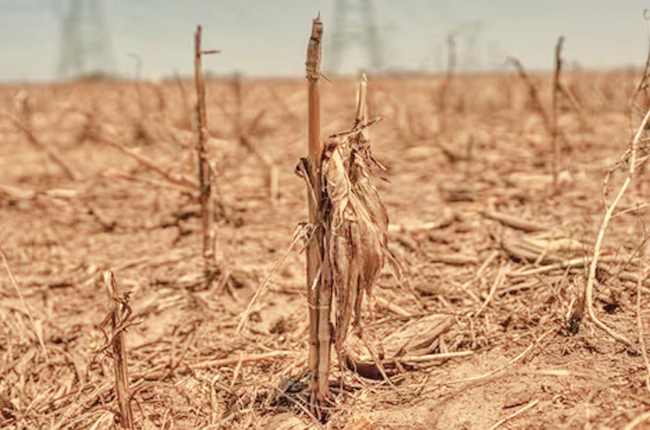This piece is written in the context of the searing heat experienced in the country. It is a warning to study and respond.
Food systems have been changing since the beginning of human history, during which humans hunted and gathered for food nomadically. By contrast, today’s food systems are complex and globally interconnected, as food products may be grown in the United States, processed in China, and then distributed in South America. Throughout history, parts of the world have experienced continuous periods of hunger, often because of war, plague, or hostile weather. The past 70 years’ technological advancements counteract this, and increasing global cooperation has begun to suggest the possibility for nations to significantly reduce hunger throughout the world.
Four major parts comprise the food system: production, stability, access, and utilisation. Agricultural determinants of food security are broadly defined as all effects of climate change on food production and its process. These effects include increased temperatures, the frequency of storms, and severe weather.
Increases in temperature, changes in precipitation patterns, and changes in storm frequency and severity often significantly affect food production. Though effects vary across regions, climate change presents troubles and uncertainty to countries across the globe.
Increased temperature
Likewise, temperature shifts disrupt seasonal biomass growth because critical windows in crop development, such as pollination, are obstructed or delayed. Increases in temperature also speed up crop maturation, shortening the seeding and harvesting period. Consequently, this increases the rate of senescence, which is the ageing and deterioration of crops. Stable temperatures are important to perennial plants, which flower and mature over spring and summer, then die every autumn and winter to return the following spring from their rootstocks.
 Agricultural productivity is prone to changes in temperatures. Crops thrive at their optimum growth temperatures. However, elevation in temperature level predominantly influences plants’ physiological processes, especially photosynthesis, transpiration, respiration, and yield.
Agricultural productivity is prone to changes in temperatures. Crops thrive at their optimum growth temperatures. However, elevation in temperature level predominantly influences plants’ physiological processes, especially photosynthesis, transpiration, respiration, and yield.
The maximum threshold temperature for various crops differs. The reproductive stage is the most vulnerable phase of the crop’s entire lifespan; this vulnerability during the reproductive stage leads to significant depletion in seed set and crop yield. Crops have a variety of alternatives for resisting, minimising, and surviving high temperatures during flowering. Plants can survive in high temperatures by keeping a cooler canopy through enhanced transpiration. Plants endure various factors during growth and development, and high temperature stress is one of the major abiotic factors that adversely affect crop production. High-temperature stress causes risk at different growth stages and ultimately reduces the yield by affecting the physiological mechanism. The loss of cell water content due to high temperature eventually decreases the cell size and growth. The reproductive tissues of plants are more susceptible to elevated temperatures than the other plant tissues, which results in a yield penalty.
High-temperature stress eventually affects germination, vegetative stage, reproductive stage, and yield. High temperature is a devastating environmental factor affecting crop growth and yield by affecting numerous crop mechanisms.
Droughts and floods
Climate change is expected to increase the frequency of severe weather patterns, notably droughts and floods. Drought can destroy entire yields or can result in drastically reduced production, even for farmers who irrigate their fields. Similarly, flooding and excess precipitation damage farmland. According to a report from DuPont Pioneer, the magnitude of damage depends on several factors: the crop, its growth stage, and the duration of flooding, and the temperature during flooding. Aside from rice, most crops are largely intolerant to flooding. For example, potatoes, dry beans, and wheat can endure submerged soils for no longer than one to two days. Other crops, such as corn and soybeans, may survive four days in submerged soils. Damage to submerged crops occurs because the soil quickly becomes deficient in oxygen, an element necessary for plants’ growth and development. Especially during the reproductive stages, such as during pollination, crops are more easily damaged by flooding than during the vegetative and flowering stages.
Climate change is expected to increase the availability of arable farmland in high-latitude regions, such as in north Eastern Europe and Russia, but reduce it in equatorial regions, particularly in sub-Saharan Africa and Brazil. By the end of the century, low-lying regions and islands are expected to lose a significant portion of arable farmland to rising sea levels.
Climate change threatens to aggravate food insecurity if production practices neglect making critical adjustments. In this case, adaptation, which involves adapting to changing climate, is necessary as it maximises benefits and minimises harms. Adaptation seeks to reduce the harmful effects of climate change on human development, and these adaptations range from using air-conditioners to tolerate hotter temperatures, to altering consumption practices to compensate for agricultural limitations. Adaptation capacity is also closely tied to wealth. The wealthier a society, the greater its adaptability to changes in regional climate, with poorer societies having lesser adaptability and more vulnerability to the effects of climate change. Unfortunately, the poorer regions will be worst affected by climate change, while the wealthiest regions are expected to face the least harmful effects.
Production limits
Three major challenges to achieving broader global food security are closing yield gaps, increasing production limits, and reducing food waste.
Firstly, “Yield gaps are the difference between the realised crop productivity of a place and what is attainable using the best genetic material, technology, and management practices” and represent a lack of productivity. Farmers in the United States, for example, typically grow over five times more corn per acre than farmers in Africa. Reducing yield gaps with modern technology and farming practices offers food-insecure populations the chance to more efficiently utilise available resources. On a global scale, yield gaps depend on fertiliser use, irrigation, and climate type. Many underperforming regions could increase production by as much as 45%-70% if crops were managed better.
 However, considerable barriers exist to equipping Africa and other regions with the tools to close yield gaps. Providing agricultural technology and knowledge to large amounts of poor farmers requires strong political leadership and large public investments. These ambitions have been historically challenging even without the damaging effects of climate change, and future efforts may require considerably more effort to close these gaps.
However, considerable barriers exist to equipping Africa and other regions with the tools to close yield gaps. Providing agricultural technology and knowledge to large amounts of poor farmers requires strong political leadership and large public investments. These ambitions have been historically challenging even without the damaging effects of climate change, and future efforts may require considerably more effort to close these gaps.
Secondly, increasing agricultural production limits occurs in a variety of ways. Improved farming practices, technological advances, and alternate food source utilisation catalyse new production potentials. In developed countries with low yield gaps, increasing production limits helps maintain strong food market systems and enable the distribution of more aid to needy countries. Also, maintaining depositories of genetic material is critical to expanding yield potential. According to the USDA, maintaining large depositaries of various crop seed genotypes and genetic materials allows farmers to select optimal crop variations each season, based on soil, weather, and pest conditions. Diverse genetic material also allows scientists and agronomists to genetically engineer stronger plants to better resist pests, require less water, space, or nourishment.
Thirdly, broader global food security must be achieved by reducing food waste. Studies estimate that between 30% and 50% of food—over 1 trillion dollars’ worth—is wasted annually, with an estimated one in four calories produced agriculturally is never consumed. Food waste occurs in developing and low-income countries because of failures in farming practices and processing. In developed countries, alternatively, most food waste occurs within households, as roughly 100kg (220 lbs.) of food per person is wasted by choosing to dispose of edible food before its expiration date or because of qualitative deficiencies.
Average effects
Because climate change influences agriculture and food security in complex and interdependent ways, many uncertainties still exist about how it will impact agriculture. The current evidence and most available research, unfortunately, only consider average effects and variations, not the extremes. The most intense climate fluctuations and changes will have lasting consequences on food security. Whether food production and distribution can adapt to changes depends highly on a region’s means.
Short-term predictions discuss conflicting effects of climate change on food security, for instance, that some regions may prosper because of climate change over the next 20 years. No matter the fleeting benefits, though, the long-run predictions state with immense certainty that climate change will severely exacerbate global malnutrition and food insecurity. But if regions increase crop yields independent of climate change, only then can nations lessen its grim consequences.
Jeevan Thiagarajah






